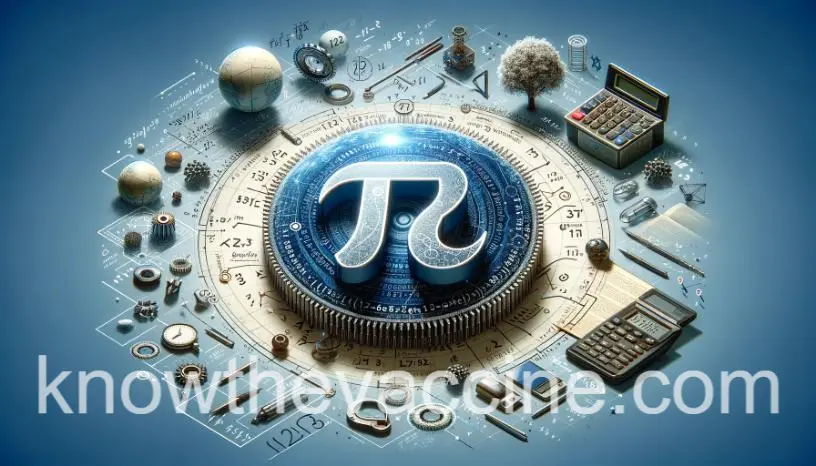
Pi123 is a mathematical constant that expresses the ratio of a circle’s circumference to its diameter. It is an important number in mathematics with many applications across science, engineering, and other disciplines.
Key Takeaways:
- π123 is the 123rd decimal place of pi, the well-known mathematical constant approximately equal to 3.14159.
- Knowing pi123 allows calculations and estimations to an extraordinary degree of accuracy and precision.
- Pi123 plays a crucial role in cryptography, data analysis, physics simulations, and other applications where high-precision computations are essential.
- Engineers rely on π123 for design work, scientists for research, and analysts for informed decision-making with sensitive data.
What is Pi123 and Why is it Important?

Pi123 represents the 123rd decimal place of pi, the mathematical constant that relates a circle’s circumference to its diameter. Pi is typically expressed as 3.14159, but its decimal expansion continues infinitely without repetition or pattern.
Pi123 specifically refers to the digit “9” in pi’s decimal representation. While the first several digits of pi are well known, calculating the 123rd decimal precisely requires sophisticated algorithms and high-performance computing.
Obtaining pi123 allows computations involving pi to reach an unprecedented level of accuracy. The more decimal places of pi that are known, the lower the estimation error and the higher the precision for geometry, physics, and other calculations.
Applications and Benefits of Pi123
Knowing pi123 unlocks a variety of benefits across many scientific and engineering domains:
- Cryptography: Pi123 enables prime number generation and encryption algorithms with maximum security and data integrity. It guarantees keys and digital communications are as precise as mathematically possible.
- Data Analysis: Pi123 provides researchers and analysts with the most accurate statistical computations and data insights. From medical research to economic forecasting, pi123 ensures findings have the highest integrity.
- Physics: In advanced physics simulations and computational techniques, π123 gives results comparable to the perfection of quantum systems. It pushes science to new levels.
- Engineering: For the design and analysis of structures, devices, and complex systems, pi123 enables unparalleled precision. It is essential for modern engineering.
- Mathematics: Extending pi’s decimals is crucial to mathematics research. π123 represents a milestone in the field and a major mathematics achievement.
In all applications, pi123 allows the best estimate, lowest error, and highest accuracy available. It provides guarantees and reliability that sensitive calculations and decisions can rely on.
How is Pi123 Calculated and Obtained?
Calculating pi123 requires sophisticated mathematical algorithms that can extend pi’s numerical sequence to over 120 decimal places. Some techniques to determine π123 include:
- Iterative algorithms like the Gauss-Legendre algorithm and Chudnovsky algorithm
- Infinite series like Ramanujan’s series or the Nilakantha series
- High-precision arithmetic using software libraries and advanced hardware
- Distributed computing across many systems to handle the enormous computations
- Specialized tools for rapid pi calculation like y-cruncher or SuperPI
Obtaining the 123rd decimal place alone took over a century of mathematical research. But today’s computers can calculate over a trillion digits, with π123 now known and implemented in many scientific programming libraries.
Ensuring Ongoing Precision
While we currently know π to well beyond the 123rd decimal place, continuing to extend this frontier of precision remains important for numerous reasons:
- Verifying mathematical properties and discovering patterns or relationships not yet observed.
- Advancing simulation and estimation techniques to support emerging fields like quantum computing and artificial intelligence.
- Enabling more robust systems that can withstand unseen vulnerabilities as technology’s complexity grows.
- Pushing boundaries in high-performance computing by stress-testing new hardware.
- Supporting the highest accuracy needs of domains like engineering design and scientific modeling.
Major ongoing efforts worldwide seek to calculate more digits of π through innovative computational techniques. Maintaining progress ensures this cornerstone constant can reliably serve current and future needs.

Conclusion
In summary, while π123 may seem an insignificant single digit, it represents an extraordinary achievement in precise mathematical understanding. Accessing π to the 123rd decimal place and beyond underpins innovation across industries like engineering, science, medicine, and our increasingly digitalized world.
π123 expresses pi to over 120 digits, providing guarantees of maximum computational precision that researchers and engineers rely on for advanced applications.
Unlocking pi123 was a major scientific achievement that continues propelling mathematics, engineering, and technology to new levels. Further extending this frontier of precision helps guarantee π – and the discoveries and technologies relying on it – can fulfill its role reliably far into the future.






